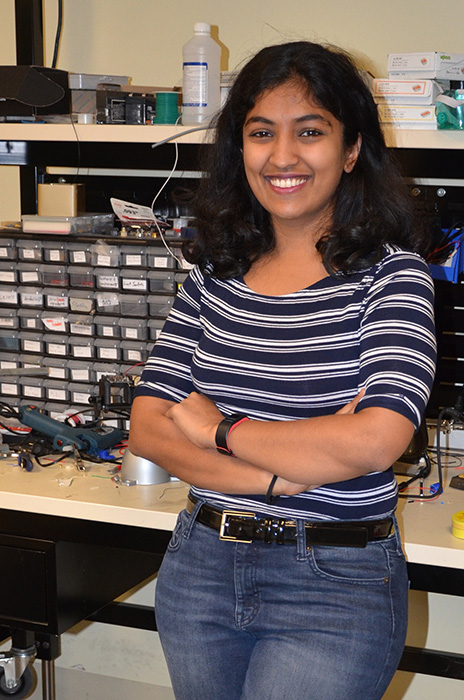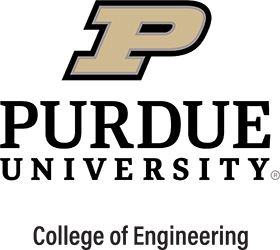The translational work in which Shruthi Suresh has already distinguished herself is one of the pursuits at the heart of the Engineering-Medicine Partnership between the Purdue College of Engineering and Indiana University School of Medicine. This PhD student's project to bring new technology into the lives of patients with spinal cord injuries reflects an important reason why the teaming of engineers and medical practitioners is elevated to the level of excellence these two institutions invest in together.
Shruthi suggests other reasons why it's important to improve seamless translations of engineering innovations into daily clinical activities like those at the Rehabilitation Hospital of Indiana, where she has attained hospital privileges. For one thing, cooperation between the two fields aims to make a new device or method easily adopted within the daily work flow, "to make life easier for clinicians" as they perform diagnoses and treatments. Even more importantly, the lab development work she conducted with mentor Brad Duerstock, associate professor of engineering practice, while earning her M. Sc. degree from Purdue University - creativity that helped her win Indiana's Women IN Technology Competition in 2018 - may save the lives of people with spinal cord injuries vulnerable to a potentially fatal condition called autonomic dysreflexia. If poorly managed, dysreflexia leads to additional impairments, possibly a hemorrhage, stroke or death.

"We want to create a system that is more quantitative [to supplement the subjective self-reporting by a patient], that allows us to know for sure that they are experiencing symptoms of dysreflexia ... and provide solutions to manage it," Shruthi says. With support from an Innovation for Clinical Translation (ICT) Fellowship she was recently awarded, she will continue to work on a system of non-invasive sensors including blood-pressure sensors. Combined with artificial intelligence, this system can signal an onset of the autonomic dysreflexia even though a patient may be unable to feel the unpredictable event beginning.
Such progress is also at the heart of Shruthi's personal vision statement. "I think the biggest inspiration for this project is Dr. Duerstock himself, who has a spinal cord injury. All the work we do at the lab revolves around improving the lives of people with disabilities as a whole, because they are such an underrepresented population," she says. "I think it's really important to make sure the issues they have, that able bodied individuals take for granted, are taken care of in a way that is simple and affordable."
Her sensitivity to needs of the disabled drove her to participate in a separate project led by her lab colleague. They launched an entrepreneurial venture to help persons who are blind conceptualize images, which are so crucial to interpreting circumstances they confront in everyday life. The haptics-based system provides feedback through a force patients feel or a pitch they hear and helps them draw valuable conclusions about the form or color of the inputs they receive without sight.
Real-life experiences she sought out for that successful startup "have helped my research," Shruthi comments. "I now gear everything so that it is more customer-focused... Engineering geared toward understanding the person [learning of one's needs and responses related to the electronic system] helps in knowing you've made a difference."
Her desire to make a difference also prompted her to participate in the Purdue-based Engineering Projects in Community Service (EPICS). She has completed five semesters as a teaching assistant in the product design projects conducted through the program. EPICS brings contributory-minded undergraduates together with project partners who need a problem solved.
The undergraduates develop a passion for problem-solving that really matters, Shruthi points out. "You teach them a human-centered approach to design and that this is the way an engineer thinks."
They learn something about the type of interdisciplinary approaches embraced by the two partner schools, she adds. Such an approach has been crucial in Shruthi's own background. She came to Purdue after having earned her bachelor's degree in electrical engineering from the National University of Singapore, but her follow-on studies, including her PhD work, have focused on biomedical engineering. She demonstrates how the dual expertise comes together. "I think it's cool that I get to share that multi-disciplinary approach with the EPICS students."
With all the research and interactive experiences Shruthi is garnering, she will be able to share her interdisciplinary skills - and profound interest in meeting people's needs - more broadly than ever as her career progresses. Her ICT Fellowship and education through the partnership could yield further medical innovations for people with disabilities, such as the sensor technology that promises to translate into clinical efficiencies and save lives.


